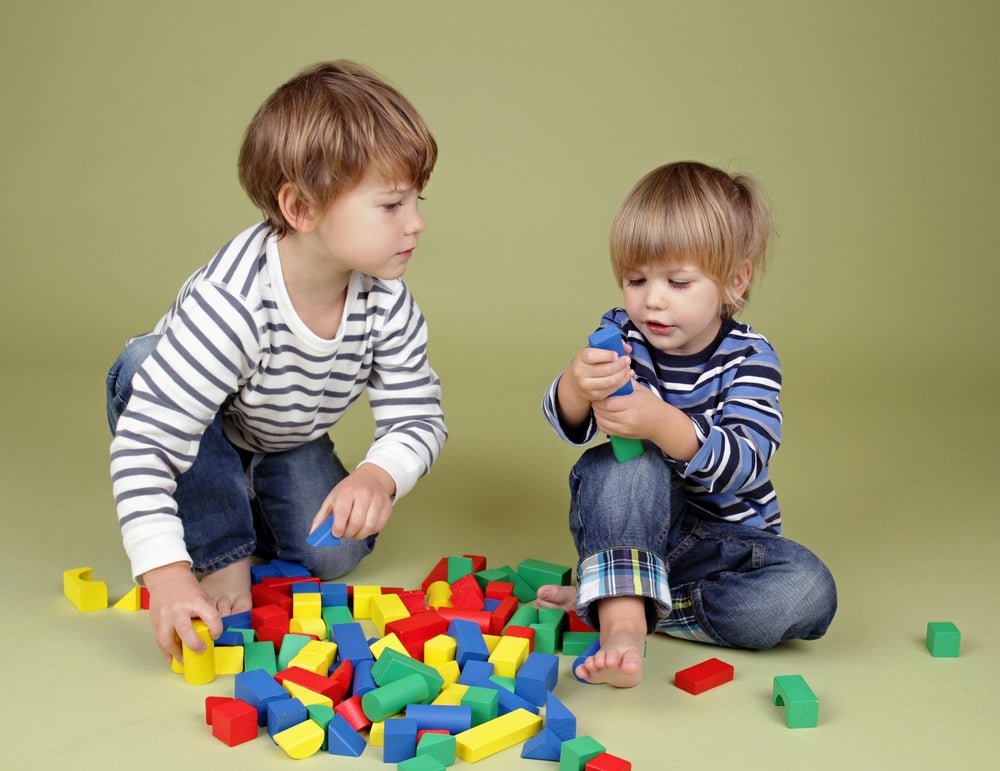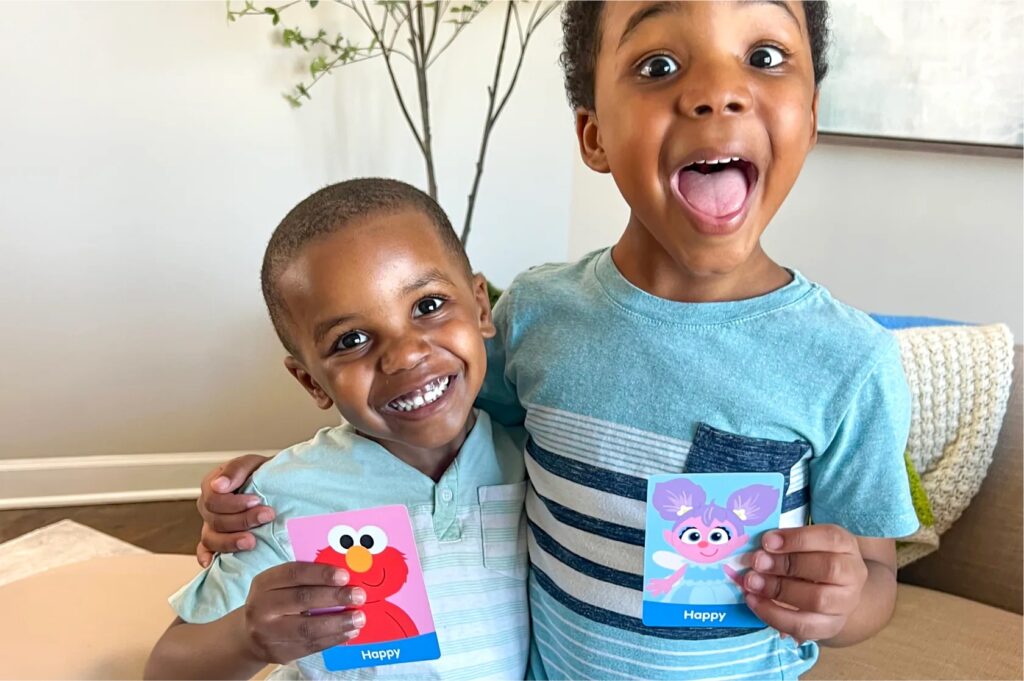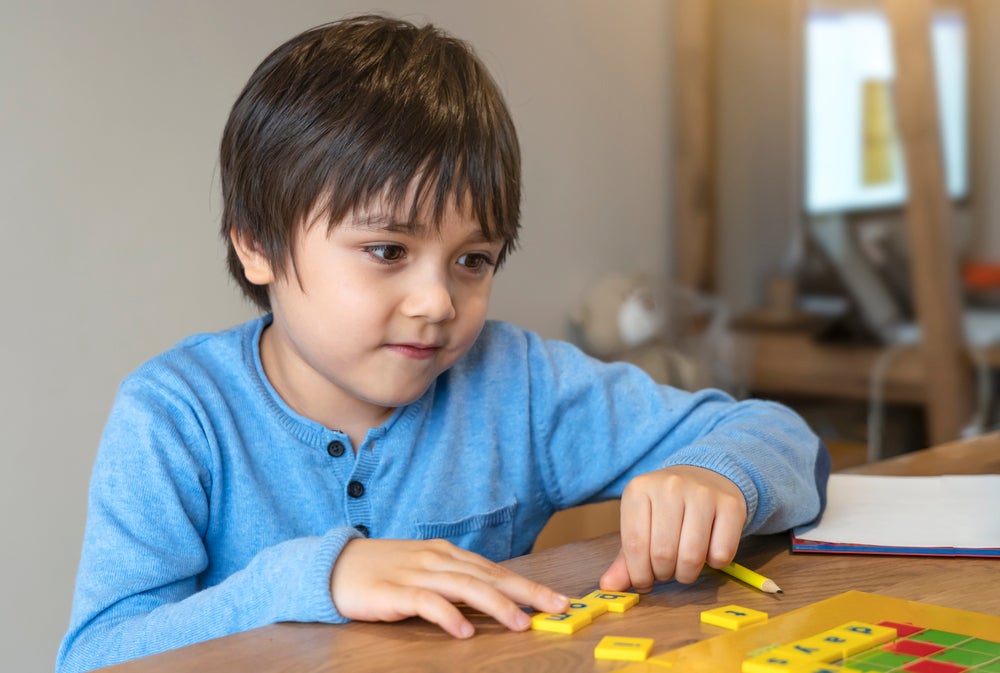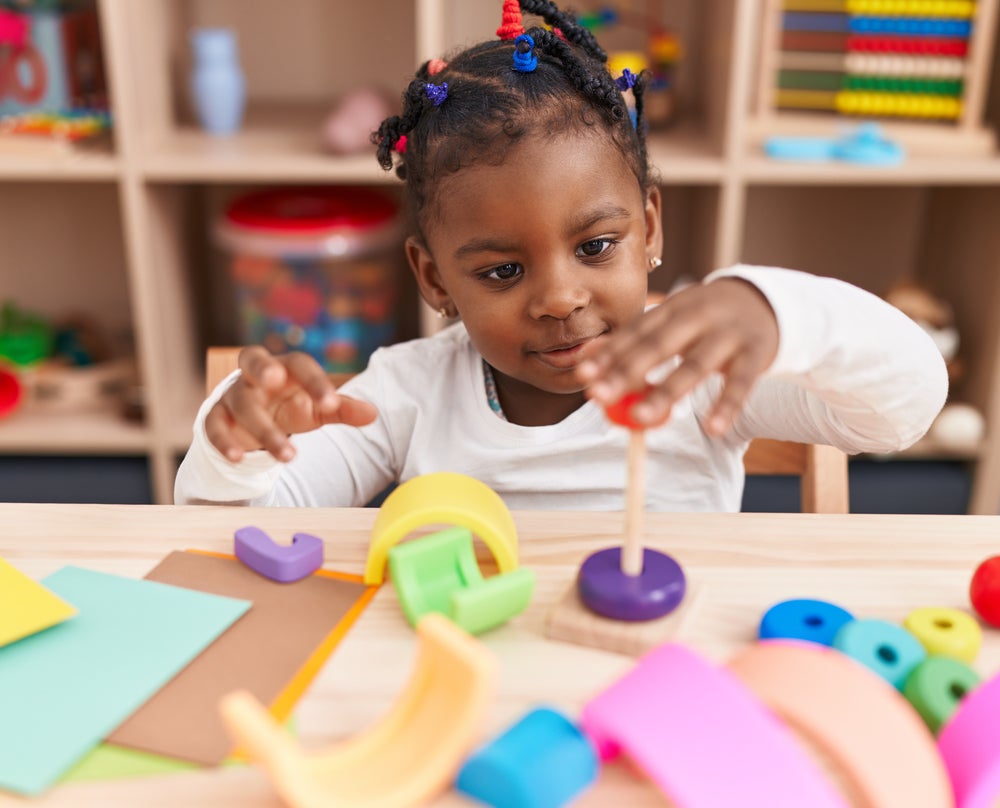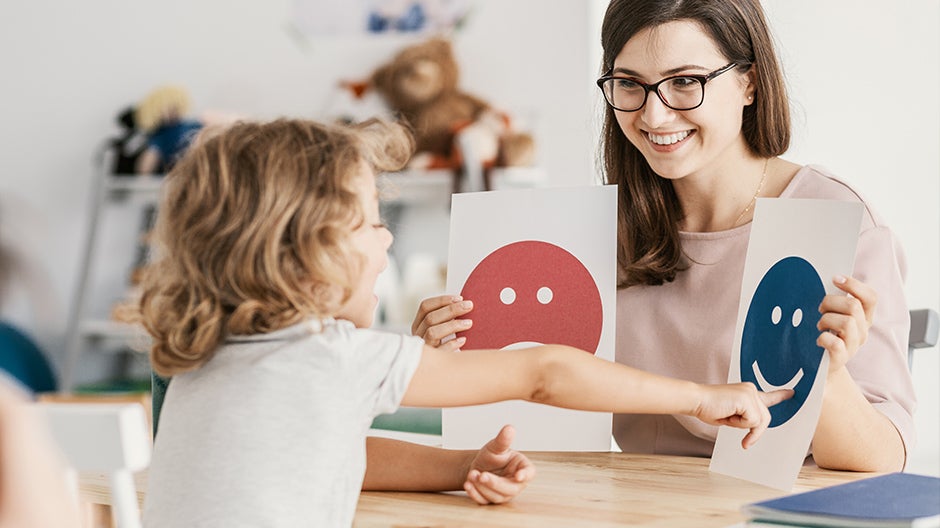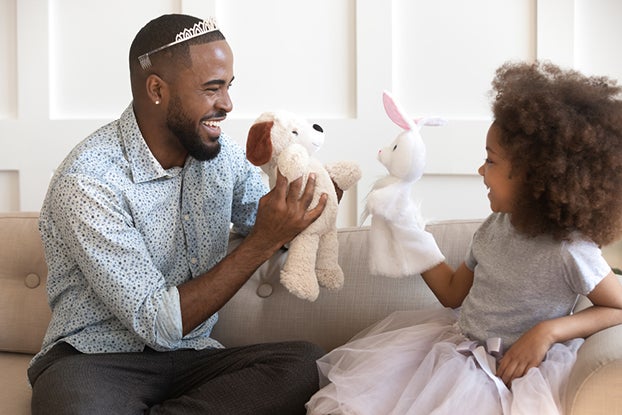There are 26 letters in the alphabet, and they all map to sounds. But some sounds, including frequent ones like /th/ and /ch/, are created using multiple letters. Taken together, letters and those multi-letter combinations are called phonograms. When kids learn them, they take a big leap forward in reading and spelling ability.
That’s important because reading and spelling are key Core Skills, part of the 5 C’s at the heart of the Begin Approach to helping kids thrive in school and life. Kids with strong Core Skills in their early years do better academically throughout their lives, so learning phonograms matters!
Curious what a phonogram is and what sounds phonograms make? Do you need a definition or a list of phonogram examples? We’ve got you covered. And once you know all that, we can help you learn how to teach phonograms to kids at home too.
The Short Cut
- Phonograms are letters or combinations of letters that make a sound, like th, ck, and ch
- Learning phonograms helps kids read fluently by speeding up their ability to sound out (decode) a word
- The English language has hundreds of phonograms, but kids can start by learning the most frequently used ones
- Teaching phonograms can be fun! There are lots of great phonogram games that tap into kids’ natural love of play
What Are Phonograms?
Phonograms are the letters or combinations of letters that represent a sound. Think of letter combinations such as oy, ck, th, and ch. These are common phonograms that you’ll often come across in the English language.
When kids don’t know these letter combinations and the sounds they make, they have a harder time writing or spelling correctly. But once they’ve learned them, they know that “oy” makes an /oi/ sound (e.g., boy), “ck” makes a /k/ sound (e.g., pack), and so forth.
There are also letters that make different sounds depending on the word. For instance, “s” is a phonogram with an /s/ sound in some words (e.g., sing) and a /z/ sound in other words (e.g., has).
Why Phonograms Matter

Phonograms are an important literacy skill. They’re the building blocks of words and they help make reading fluently and spelling much easier.
Let’s take the word cat as an example. For a child learning to spell, they will usually pronounce the individual sounds (called the phonemes) of the word: /c/-/a/-/t/.
Once kids master these simple words, teachers often take things up a notch with a word like talk. A child who understands phonograms doesn’t need to separate each letter of the word. Instead, they will pick up on the /alk/ sound and then be able to spell the word correctly: /t/-/alk/.
This is an essential skill because many words, especially longer ones, can be formed more quickly by remembering that certain letter combinations make certain sounds.
For example, we don’t pronounce the word holiday by going /h/-/o/-/l/-/i/-/d/-/a/-/y/. Imagine how much time you’d spend sounding out each letter of every word you want to spell!
A much better strategy is to focus on segmenting the word by phonograms: /h/-/o/-/li/-/day/. Understanding phonograms makes spelling and reading fluently much easier.
A child who understands phonograms may also have a better chance of correctly spelling words they are unfamiliar with. For example, when a child can spell winter, they have a better chance of spelling other -ter words like sister, mister, enter, after, etc.
List of Common Phonograms
There are hundreds of phonograms in the English language, but we use about 35 of them most frequently. This list of common phonogram examples can help you identify which ones your child knows and which they’re still working on.
Common A Phonograms
- ab
- ack
- ag
- ail
- ain
- ake
- am
- an
- ank
- ap
- at
- ay
Common E Phonograms
- eed
- ell
- est
- ew
Common I Phonograms
- ick
- ight
- ill
- in
- ine
- ing
- ink
- ip
Common O Phonograms
- ob
- ock
- op
- ore
- ot
- out
- ow
Common U Phonograms
- uck
- um
- unk
Y all on its own is also a common phonogram.
Phonograms vs. Phonemes
People sometimes mistake phonograms for phonemes. The words sound similar, and they’re both important early reading concepts, so they’re easy to mix up!
But while the concepts are closely related, there are fundamental differences between the two.
A phoneme is the smallest unit of sound in our spoken language. We have 44 phonemes in the English language, and we combine these individual units of sound to make words.
For example, from the five-letter word light, we only hear or pronounce three individual sounds: /l/-/i/-/t/.
A phonogram, on the other hand, is the letter or combination of letters that represents a speech sound. So, in light, the /igh/ phonogram represents the /i/ phoneme.
The root word -gram, meaning “something written,” can help you remember the difference! The phonogram is written, while the phoneme is the sound.
These are the building blocks of reading and spelling. The more familiar kids are with these sounds and letter combinations, the more comfortable they’ll be with these important Core Skills!
How to Teach Phonograms at Home
1. Start Simple
There is no perfect pace for teaching phonograms. Some kids master the concepts and skills very quickly, while others need a little more time.
No matter where your child is on their learning journey, the best approach is to start with a few phonograms and build from there.
Try introducing three to five phonograms at a time. Once your child gets comfortable with those, you can move on to the next three to five, and so forth.
Since there are so many to get through, it’s OK to set a goal of introducing a certain number each week. But don’t feel like you have to meet it no matter what. If your child hasn’t mastered the phonograms you taught them last week, give them as many days as they need before progressing to new ones.
This will keep them excited about learning and prevent them from becoming overwhelmed. Don’t worry about a specific timeline; they will eventually get the hang of it!
2. Read Together Regularly
Reading to kids during early childhood makes a huge difference in their language development. Not only do books expose children to incredible worlds and help with cognitive and language development (and so much more!), but reading also plays an essential role in helping children get more familiar with phonograms.
Whenever your child is reading and comes across a word they’re unfamiliar with, try pausing and working through the phonemes and phonograms. Help them sound out the letters and letter combinations.
You can also reinforce a phonogram by highlighting other similar words your child might know. For example, if they’re learning the ch phonogram, remind them of words they may know, such as chair, chips, chat, child, etc.
Many early reading books do a great job of introducing words that share phonograms to help kids learn them (Dr. Seuss’s are famous for it).
Activities for Teaching Phonograms
1. Phonogram Simon Says
What You’ll Need
- 8 index cards
- Marker
- 8 single-letter phonograms
- Crayons
What to Do
Start by writing down eight phonograms (one on each card) with your child. As you’re writing, say the sound the letter or letter group makes. Then, have your child decorate each card in fun ways.
Once you’re done making your cards, stand on one side of the room and have your child stand on the other side. Then, hold up a card and say, “Simon says make the sound!”
If your child pronounces the phonogram correctly, they take a jump toward you. If they don’t, they have to jump backward. (If there’s no room for them to go backward, they can stay put.)
The goal is for your child to reach you before the deck is done!
Tip: If your child is still mastering individual letter sounds, you can play this game with single-letter phonograms instead of letter groups.
2. 52 Pick-Up (with a Twist)
What You’ll Need
- The same index cards from Phonogram Simon Says (and more if your child is ready)
What to Do
To start playing, toss the phonogram cards in the air. Then, have your child go around the room and say the sound for every letter or phonogram that is facing up.
If they can make the sound correctly, they get to keep that card. Any cards they cannot pronounce go back to the deck. Then, it’s your turn (feel free to fake it a bit here).
Take turns going back and forth until all the cards are picked up. The person with the most cards wins!
3. Feel the Letter
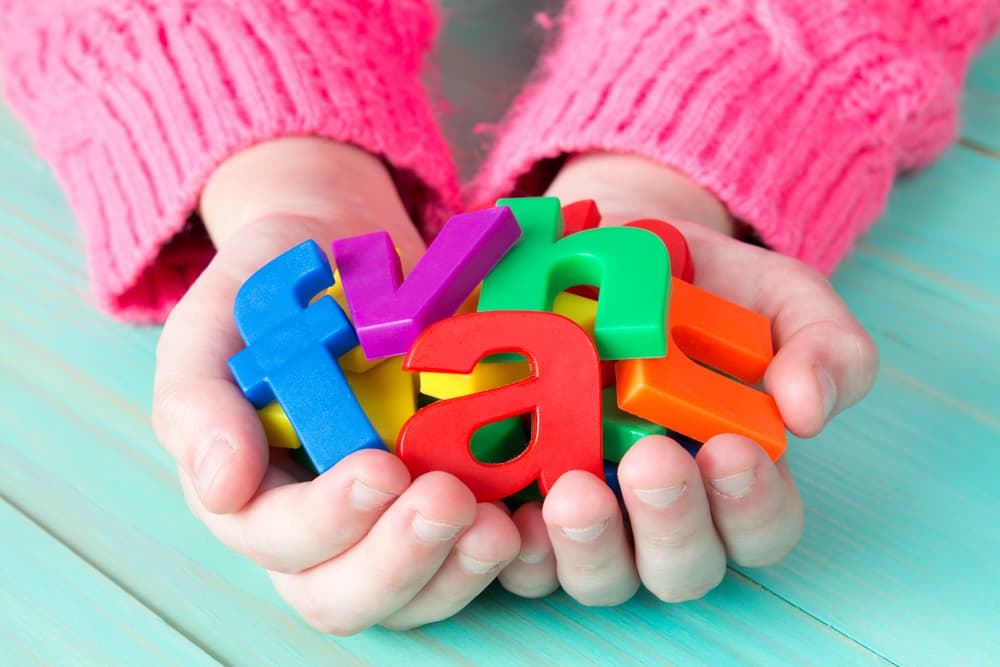
What You’ll Need
- Magnetic or foam letters
What to Do
This game works best for single-letter phonograms. Start by asking your child to put their hands behind their back. Then, place a magnetic or foam letter in one of their hands and have them feel its shape.
To get a point, your child needs to tell you the letter. And to get a bonus point, they need to tell you the sound that letter makes. You and your child can take turns guessing to make it a fun competition!
Remember to keep things fun. For example, if your child gets a phonogram wrong, simply correct them and move on without stressing too much. The point of this game is to practice, and repetition is a great way to solidify phonogram knowledge.
Learning Phonograms with Begin
At Begin, we know that kids learn best through play, and we believe in the power of early learning tools to give them their best start to achieving their fullest potential. Our award-winning HOMER app uses fun games customized to your child’s age and level to teach them the reading concepts they need.
And it works! Just 15 minutes a day has been proven to increase early reading scores by 74%.
When you’re teaching phonograms yourself, remember to start simple by introducing just a few at a time before moving on to more. Build kids’ confidence around each set you introduce, and celebrate the progress they make day by day. You’ll be amazed at how their learning builds.
And if you need a little help, we’ve got your back with HOMER or our Early Learner Program, which covers all 5 C’s through a combination of our award-winning products for kids!


